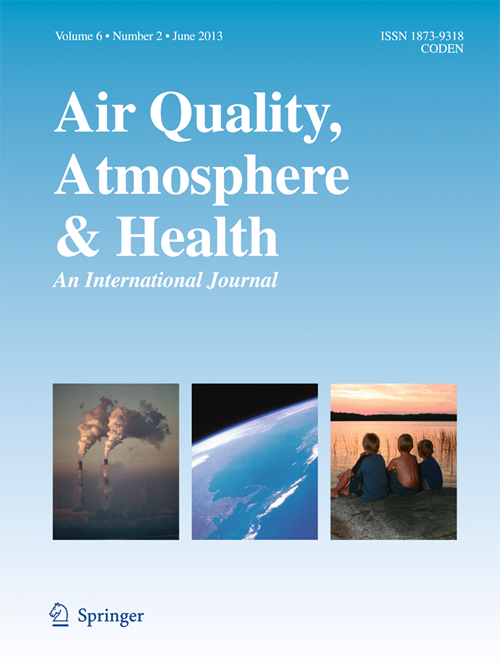摘要
固定和移动源排放的挥发性有机化合物(VOCs)引起公共卫生关注;然而,目前还缺乏对整个亚洲人口进行详细暴露评估的全国性模型。本研究透过8个月的采样活动,评估台湾地区户外VOC浓度,并建立特定VOC成分的土地利用回归模型。从349个行政中心中随机抽取31个区办事处,对苯(B)、甲苯(T)、乙苯(E)、二甲苯(X)、苯乙烯(S)、二氯甲烷(DCM)和正己烷(n-H)等7种挥发性有机化合物进行24小时采样。收集道路交通信息、气象数据和兴趣点,并将其与地理信息系统相结合,建立特定VOC成分的LUR模型。B、T、E、X、S、DCM和n-H的中位数浓度分别为0.95 μg/m3(范围:0.85 ~ 7.96 μg/m3)、1.21(1.13 ~ 7.00)、0.59(0.53 ~ 5.21)、2.01(0.88 ~ 6.86)、0.82(0.76 ~ 5.52)、43.90(2.44 ~ 488.22)、0.60 (0.55 ~ 5.11)μg/m3。DCM是挥发性有机化合物中含量最高的组分。特定LUR模型的预测能力(R2)分别为0.71、0.36、0.60、0.63、0.41、0.68和0.82。7种VOC组分的模型R2值与留一交叉验证R2值的差异范围为1 ~ 7%。本研究建立的LUR模型对台湾地区的B、E、X、DCM和n-H有较好的预测能力。建立的模型可用于环境流行病学研究中特定挥发性有机化合物组分的暴露评估。Volatile organic compounds (VOCs) emitted from stationary and mobile sources cause public health concerns; however, a nation-scale model for detailed exposure assessment of the entire population in Asian is lack. This study conducted an eight-month sampling campaign to evaluate outdoor VOC concentrations and establish land-use regression (LUR) models for specific VOC components in Taiwan. A total of 31 district offices were randomly selected from 349 administrative centers to perform a 24-h sampling campaign for seven VOC components: benzene (B), toluene (T), ethylbenzene (E), xylene (X), styrene (S), dichloromethane (DCM), and n-hexane (n–H). Road traffic information, meteorological data, and points of interest were collected and combined with a geographic information system to establish LUR models for specific VOC components. The median concentrations of B, T, E, X, S, DCM, and n–H were 0.95 μg/m3 (range: 0.85–7.96 μg/m3), 1.21 (1.13–7.00) μg/m3, 0.59 (0.53–5.21) μg/m3, 2.01 (0.88–6.86) μg/m3, 0.82 (0.76–5.52) μg/m3, 43.90 (2.44–488.22) μg/m3, and 0.60 (0.55–5.11) μg/m3, respectively. DCM was identified as the highest component compared with other VOC species. The predictive capacities (R2) for specific LUR models were 0.71, 0.36, 0.60, 0.63, 0.41, 0.68, and 0.82. The differences between the model R2 value and leave-one-out cross-validation R2 value ranged from 1 to 7% for seven VOC components. This study established LUR models with good predictive capabilities to estimate B, E, X, DCM, and n–H in Taiwan. These built models can be applied for exposure assessment of specific VOC components in environmental epidemiological studies.

 求助内容:
求助内容: 应助结果提醒方式:
应助结果提醒方式:


